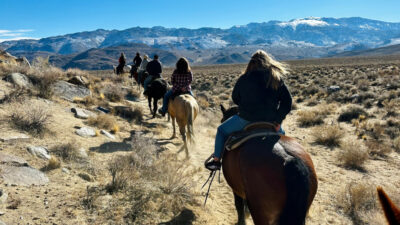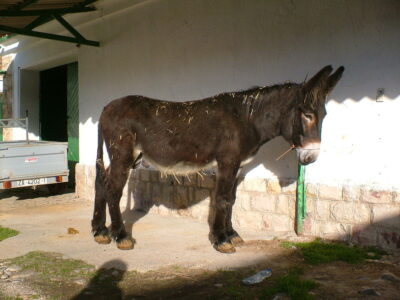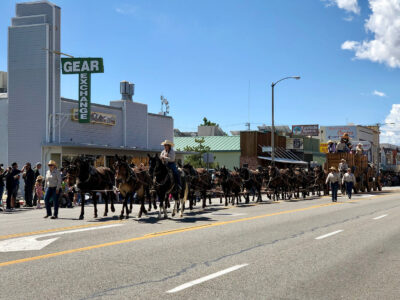Discover the Eastern Sierra’s Mule Pack Stations & Equestrian Centers
The Eastern Sierra presents a landscape like no other. Rugged, untamed, and breathtakingly beautiful, its vistas call to the hearts of equestrian enthusiasts and adventurers alike. At the forefront of providing access to this wild beauty are the Mule Pack Stations and Equestrian Centers dotted across the region. These stations and centers serve as the backbone to adventures in the Eastern Sierra, preserving traditions and ensuring the unique character of this area remains accessible to all who seek it.
Why Choose Mule Packing Adventures
Mule packing in the Eastern Sierra opens doors to remote wonders unreachable by conventional means. Unlike hiking or vehicle tours, this mode of travel has the unique advantage of traversing rugged landscapes with ease.
Mules, known for their strength and sure-footedness, can navigate steep terrains, ensuring your access to secluded spots. This adventure not only brings you closer to nature but also allows for a deeper connection with history; these trails have been used for centuries.
Compared to backpacking, where you carry your own gear, mule packing offers the luxury of exploring without the burden. You immerse in the wilderness, yet the essentials travel with you, cared for by seasoned professionals from local pack stations. Through mule packing, the Eastern Sierra’s majesty unfolds in a manner both respectful to the environment and enriching to the soul.
Types of Trips to Choose From
JMT Resupply
Arrange your John Muir Trail (JMT) hike to be resupplied by one or more of the local pack stations located on the eastern slopes of the Sierra Nevada. Hike the JMT or this section of the Pacific Crest Trail without the need to hike out the many miles and descend and ascend the many thousands of feet to nearby towns.
Spot Trips
You and your gear are transported to a remote Eastern Sierra location and returned by pack train on a specified date. If you’re a first time or infrequent visitor to the area, chat with the pack station staff about places to go. They know the best spots and can give you the best recommendations.
Dunnage Drop
All gear is transported on pack mules. Hike in and out, hike in ride out, or ride in hike out. No matter the experience, age, or capability of the members of your group, set up a trip that caters to each person’s needs and still have a great group adventure.
Drives
Many of the pack stations and equestrian centers run horse and cattle drives to move livestock from one area to another seasonally. Participate in an authentic mounted drive and experience a true western adventure.
Day Trail Rides
Saddle up and take a few hours, a half day, or all-day ride into the mountains of the magnificent Eastern Sierra.
A Guide to Choosing the Right Pack Station

Mule in pasture near Bishop
Selecting the ideal mule pack station for your Eastern Sierra adventure warrants careful consideration of several key factors. First and foremost, assess the variety of tours on offer. Whether your interest lies in serene landscapes of lakes and creeks or the rugged terrain of craggy mountain passes, or a view of the history of the region, each station provides unique experiences tailored to diverse preferences.
Secondly, consider the skill levels catered to by the stations, between them they accommodate everyone from beginners to seasoned adventurers. Do you want to summit Mt. Whitney, take a leisurely afternoon ride, or enroll kids in a packing camp? Choose your station accordingly to ensure a safe and memorable adventure regardless of your proficiency.
Lastly, the geographic location plays a pivotal role in your selection process. The pack stations and equestrian centers lie along a stretch of 150-miles from Lone Pine to Bridgeport along US‑395. Your base and where you start and finish may determine your choices. By keeping these factors in mind, you’ll be well on your way to choosing a station.
Seasonal Considerations
The allure of the Eastern Sierra, with its majestic peaks and serene valleys, draws adventurers year-round. Yet, the shifting seasons bring distinct flavors to experiences at mule pack stations and equestrian centers. It’s crucial you consider the time of year when planning your visit to these iconic locations.
Summer and autumn are prime times for exploring the backcountry. The warm weather and long days offer ideal conditions for journeys into the wilderness. During these seasons stations operate at full capacity, offering a wide range of tours and activities. As fall approaches, the changing leaves provide a breathtaking backdrop for rides, a visual feast not to be missed.
Winter and spring, however, tell a different tale. Operations at pack stations and equestrian centers may slow down or pause as the snow blankets the trails. This period can offer a unique, serene beauty for those prepared for the cold. To enjoy the Eastern Sierra during these quieter months, consider engaging in winter-specific activities offered by some stations. Always check ahead for availability and prepare adequately for the colder, potentially unpredictable weather.
Tailoring your adventure to the season will not only enhance your experience but also ensure that it aligns with the operational schedules of these stations and centers. From the vibrant, bustling trails of summer to the tranquil, snow-covered paths of winter, every season offers its unique magic in the Eastern Sierra.
Eastern Sierra’s Equestrian Centers

Horseback trail ride in fall in Buttermilk Country.
Without horses there would be no mules. See ‘A bit about Mules’ below.
Centers for equestrian pursuits in the heart of the Eastern Sierra have long-standing, well developed programs designed to cater to varying skill levels from beginners to advanced riders. They offer lessons on horse care, riding techniques, and safety with a distinct blend of traditional and modern equestrian practices.
Situated in the foothills of the Sierra Nevada they boast prime riding trails that meander through this scenic backdrop, offering unparalleled experiences for riders. Visitors can engage in a range of activities from trail riding to participating in rodeo sports, all under the watchful guidance of seasoned professionals.
Find Your Ride Here
Below is a guide to the pack stations and equestrian centers in Bishop’s big backyard with an overview of their location and offerings. Listed in alphabetical order.
- Bishop Pack Outfitters (at North Lake in Bishop Creek Canyon): A long-running family business, Bishop Pack Outfitters serves the Sabrina, Horton, Lamarck, & Humphries Lakes basins. Backcountry fishing trips are a specialty of this outfit. Set up a base camp or do a loop trip, this outfit can help you every step of the way.
- Convict Lake Resort (2000 Convict Lake Rd., 9-miles south of Mammoth Lakes, on the shores of Convict Lake) The resort offers daily horseback rides Memorial Day through Labor Day weekend. Operated by Rock Creek Pack Station.
- Cottonwood Pack Station (Located at Horseshoe Meadow, 8-miles southwest of Lone Pine): Famed for their 31-day stock supported hiking trip enabling hikers to complete the John Muir Trail from Horseshoe Meadows, near Lone Pine, to Happy Isles, in Yosemite National Park; plus a variety of horseback and mule pack adventures, from day rides to multi-day treks into the High Sierra, including areas of the Golden Trout Wilderness and the Sequoia-Kings Canyon National Park.
- McGee Creek Pack Station (2990 McGee Creek Rd., 3-miles from Crowley Lake, on the edge of the John Muir Wilderness): Specializes in exploring the High Sierra Nevada with pack trips into the Golden Trout Wilderness. Winter rides offered in the Bishop and Lone Pine/Alabama Hills areas including rides during the historic Lone Pine Film Festival with renowned western film historian. This outfit caters to all experience levels and ages; great for families.
- Millpond Equestrian Center (45 Sawmill Rd., Bishop): This center offers long- and short-term boarding—including transient overnight stays, sales, and training. With over 20-acres of paddocks, areas, and corrals they provide lessons in dressage, jumping, and western riding. Special clinics are offered year-round.
- Mt. Whitney Pack Trains (Operated by Rock Creek Pack Station out of Horseshoe Meadow near Lone Pine): Summit Mt. Whitney with of wranglers and pack mules. Join others on a 6-day group trip to hike with just a day pack and reach the highest point in the contiguous USA.
- Rainbow Pack Outfitters (on S. Lake Rd., at Parchers Resort in Bishop Creek Canyon): This family business has been serving wilderness travelers since 1924. They encourage guests to “create your own trip” and invite visitors to tour the facility for free, July through September. They offer pack trips, educational courses, fishing trips, daily rides, and more.
- Rock Creek Pack Station (On Rock Creek Rd. off US-395, 26-miles south of Mammoth Lakes and 33-miles north of Bishop): This outfit offers an amazing range of equestrian activities: day rides—from 2-hours to all day; multi-day pack trips and horse drives; wild mustang adventure trips—some include photography workshops; private custom trips; and packing school courses.
- Virginia Lakes Pack Outfit (On Virginia Lakes Road, 5-miles from the junction with US-395 near Conway Summit): Take a 1½-hour trail rides and get a view of Bodie, California’s best preserved ghost town, from horseback. Go for a full day outing in the Sierra and witness the grandeur of northern Yosemite. Or schedule multi-day trips, customized to suit your exact needs, whether that’s a pack drop or an all-inclusive luxury trip where your every need is taken care of.
Request a FREE Bishop Information Guide
Look!!! Let’s plan a Death Valley Trip. Ask about including a visit from Bishop.
And don’t forget to check out all our great lodging options.
Read and study these pages, download the brochures and maps, and plan a trip to Bishop and the Eastern Sierra. Call us: (760) 873-8405, or email us: and let us help you choose your future adventure. We look forward to meeting you then!
Please follow us on social media:
Facebook | TikTok| YouTube | Instagram
Check out the latest blog posts on BishopVisitor.com!
Do Good. Be Good. Feel Good.
Safety and Etiquette in the Great Outdoors
Embarking on an equestrian adventure brings you closer to the untamed beauty of the Eastern Sierra. With every step, the bond between you and nature deepens. However, your journey’s success hinges on respecting safety protocols and etiquette. All the regional pack stations and equestrian centers operate with these tenets as their cornerstone.
At the onset, solid preparation is paramount. It is crucial to acquaint yourself with the rules and guidelines each site upholds. These principles guard not only your well-being but also that of the animals, the packers and wranglers, and the delicate balance of the ecosystems you’ll traverse.
Remember, the magic of these experiences lies in the hands of those who approach with care and respect. By choosing to honor the guidelines set forth by each pack station and equestrian center, you ensure that the majestic landscapes of the Eastern Sierra continue to thrive for generations to come.
Conservation Efforts

Mule pack train near Bishop Pass.
Mule pack stations and equestrian centers play a pivotal role in the conservation of the Eastern Sierra’s pristine environments. They have taken the lead in preserving the trails that weave through this rugged landscape. Efforts by each of these establishments ensure that paths remain accessible and minimized for environmental impact. This stewardship extends beyond the trail paths.
Wildlife benefits significantly from the conservation measures enacted by these stations. They participate in initiatives aimed at protecting the habitats of local fauna. Their actions help maintain the ecological balance, allowing visitors to experience the wilderness with minimal disruption. Moreover, these entities advocate for sustainable practices among their guests, reinforcing the importance of leaving no trace.
The environment of the Eastern Sierra gains from the collective efforts of these facilities. Through their commitment, the regions surrounding these pack stations are better preserved for future generations. Their involvement in local conservation efforts underscores a deep-rooted respect for nature, ensuring the stunning landscapes and diverse ecosystems continue to thrive.
Saddle Up!
Community and Culture
A journey into the heart of the Eastern Sierra’s equestrian landscape weaves a story far beyond scenic backdrops. It introduces you to a vibrant community where traditions thrive. Engaging with local customs becomes second nature as you step into the world of a pack station. Visitors are welcomed into a family dedicated to the preservation of trails and stories passed down through generations. Whether through sharing tales under the stars, participating in hands-on experiences, or celebrating the great outdoors, every encounter enriches understanding and appreciation.
Moreover, the inclusive atmosphere fostered by these outfits prompts a deeper connection, not just with the rugged landscape but also with its stewards. Here, every visitor leaves with a sense of belonging—and an invitation to return.
Riding Into the Sunset
Here, the call of the wild is answered by the neigh of horses and the steady pace of mules. It’s more than an invitation; it’s a passage to experiences that await in the great outdoors. The Eastern Sierra and its mule stations and equestrian centers are not just destinations; they are chapters in your story, waiting to be lived. Now, it’s your turn to ride into the sunset, to discover what lies beyond the horizon.
History
A bit about Mules
The mule is a hybrid animal bred from a male donkey and a female horse. The hinny, which is a slightly less common variant, is the result of breeding a male horse with a female donkey. The mule and hinny have subtle differences that a trained eye can recognize, but most of us refer to them both, albeit incorrectly, as mules.
Mules are known to have more stamina, have greater patience, and live longer than horses. They require less food than a horse of similar size, are more independent, and can walk greater distances without rest. They are also said to have higher intelligence and be less obstinate than donkeys. All-in-all the mule has inherited the best of each of its equine parents.
The Royal Gift

Zamorano Leonés donkey, the type of donkey gifted to George Washington by Spain in 1875.
The annals of history are unclear about exactly when the first mules were bred, but it is estimated this practice is over 6,000 years old. Fast forward to 1875 when General George Washington became the first American mule breeder. A shipment of one male donkey, named Royal Gift, and two female donkeys from King Charles of Spain is credited as having started the American mule dynasty. Washington was a student of agriculture and saw the potential for mules in the American landscape. By 1799, the year of his death, his estate, Mt. Vernon, listed 58 mules on the property. In 1807 there were an estimated 855,000 mules in America and by 1887, just a little over 100 years since Royal Gift arrived, there were over 2.2 million mules in the US.
Gold in California
Mules became popular beasts of burden in the cotton fields of the south, but they became indispensable in the gold fields of California. In 1848, when gold was discovered in California, the mule was the working animal that made this discovery economically viable. Mules carried gold from the gold fields to the ports and from the mines to the banks. They hauled ore, supplies, commodities, mail, equipment, and people through the region. By 1855 over 31,000 mules worked throughout California on both the western and eastern slopes of the Sierra Nevada. While all this industry was underway at the lower elevations of this as yet little explored mountain range, John Muir rode his mule, Brownie, throughout the upper elevations from Kings Canyon to Yosemite.
Borax in Death Valley

The 20-mule team in Bishop’s Annual Mule Days Parade.
Another discovery that would likely not have resulted in a workable business model, if it weren’t for the mule, was that of borax in Death Valley in 1881. For eight years the company that mined the borax near Furnace Creek in Death Valley transported over 20-million pounds of borax with their 20-mule team trains to Mojave, 165-miles away. The round-trip journey took over 20 days, covering terrain without water in extreme high temperatures. Each train consisted of two 16-foot wagons filled with borax, plus a 1,200-gallon water tank. The total load weighed over 36 tons. In all those years, not a single mule was lost. It remains one of the most enduring testaments to the stamina of the mule.
Mules in the Mountains
Today the mule is still a vital part of the Eastern Sierra landscape and mountain activities. There are at least ten active mule pack stations in the Sierra Nevada. These stations supply mule trains and packers for the US Forest Service crews who build and maintain back country trails and foot bridges. The stations service mountaineering base camps, hikers along the Pacific Crest and John Muir Trails, and recreationalists looking for a mountain adventure. The United States Marine Corps also utilized mules for its Animal Packers Courses at its Mountain Warfare Center located near Bridgeport, CA.
Mule Days

We celebrate mules and packers every Memorial Day weekend.
California was literally built on the backs of mules. This magnificent pack animal is still revered in the Eastern Sierra and Bishop is home to an annual celebration of the mule. Mule Days, held every Memorial Day weekend, is “The Greatest Mule Show on Earth.”
#visitbishop Guest Experiences
**Make sure to tag your Instagram and Facebook photos with #VISITBISHOP so we can find them!!


